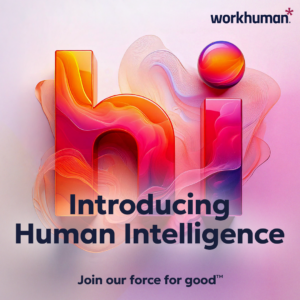
The Upskilling Imperative: Elevating Talent to Thrive in the Modern Workplace
Sponsored by Workhuman. In today’s rapidly evolving workplace, upskilling isn’t just an advantage — it’s a necessity. Employees who learn new skills are more engaged,

Sponsored by Workhuman. In today’s rapidly evolving workplace, upskilling isn’t just an advantage — it’s a necessity. Employees who learn new skills are more engaged,

In a world where technology is evolving at lightning speed, staying relevant is a challenge for both employees and employers. As industries adapt to new

The State of Women in Leadership: Room for Improvement We often hear about the business benefits of women in leadership roles. That isn’t just wishful

“I know what I like, and I like what I know.” It’s easy to scoff at this old saying. Yet it applies to most of

Artificial intelligence (AI) is transforming organizations at a breathtaking pace. But even positive change can trigger push-back from detractors. When left unchecked, AI resistance can

Workplace evolution is natural. In its time, the digital workplace of the late 20th century was revolutionary. But that era has come and gone. And

Diving into important talent strategy trends for 2024, one theme surfaces again and again. What many call “The Great Work Reset” isn’t over. Far from

If you’re a business or HR leader, you’re probably facing an enormous talent management challenge. Employers everywhere are struggling to retain and upskill existing employees,

As we take our first steps into 2024, it’s hard to imagine what this year will bring for HR and L&D. Last year was tumultuous,

The push/pull challenge of change management is never easy to embrace. After all, resisting disruption is human nature. But the process of unlearning and relearning

Today’s workforce is rapidly changing, as Boomers pass the baton to their Gen X, Millennial, and Gen Z counterparts. However, for many organizations, this transition

In today’s fluid job market, companies everywhere are seeking innovative ways to tap into a more skilled, diverse, adaptable talent pipeline. This is a key

Corporate learning and development (L&D) is at a crossroads. Today’s workforce desperately needs a skills update to prepare for the future of work, and old-school

Recently, one of the soldiers in my reserve unit decided it was time to hang up the uniform and transition to the civilian world. During

In today’s fluid, fiercely competitive business environment, many organizations continuously strive to stay ahead of the curve. They know success requires an ongoing commitment to

For decades, higher education has been considered the best way to gain the knowledge and experience employees need for a successful career. (At least, that’s

People often ask me which HR trends should be on their radar. It’s a fair question, because I organize two of the HR profession’s most

Keeping valued employees onboard is top-of-mind for many organizations these days. But what kind of employee retention strategies are actually working? To find out, we

Imagine you’re a hard-working entry-level employee who’s been in your current position for less than a year. Your skills are solid, but they don’t help

Over the last three years, flexible and agile work models have been at the forefront of workplace disruption. Emboldened by work-from-home standards enforced during the

In HR circles, we talk a lot about employee development. Often, we focus on its role in improving workforce engagement and retention. But strategic learning

At some point, every organization will face an economic downturn. It could be a global recession or a serious slump in one of the industries

Sponsored by Reejig Countless HR tools, applications, and platforms now rely on artificial intelligence in some form. Users may not even notice that AI is

The current talent market poses numerous challenges for leaders and employees, alike. Perhaps the most disruptive force redefining the post-pandemic business landscape is persistently high

In response to the Great Resignation, employers everywhere are reevaluating their talent strategies. As part of this process, they’re seeking cost-effective ways to retain employees